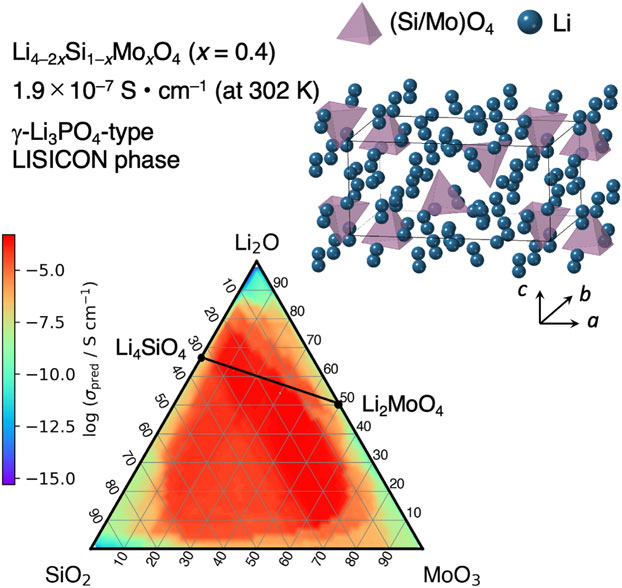2 0 0 0 OA Search for Lithium Ion Conducting Oxides Using the Predicted Ionic Conductivity by Machine Learning
- 著者
- Yudai Iwamizu Kota Suzuki Naoki Matsui Masaaki Hirayama Ryoji Kanno
- 出版者
- The Japan Institute of Metals and Materials
- 雑誌
- MATERIALS TRANSACTIONS (ISSN:13459678)
- 巻号頁・発行日
- vol.64, no.1, pp.287-295, 2023-01-01 (Released:2022-12-25)
- 参考文献数
- 42
- 被引用文献数
- 1
A machine learning method was developed, which predicts ionic conductivity based on chemical composition alone, aiming to develop an efficient method to search for lithium conductive oxides. Under the obtained guideline, the material search was focused on the Li2O–SiO2–MoO3 pseudo-ternary phase diagram, which is predicted to have high ionic conductivity (>10−4 S·cm−1). We investigated the formation range, ionic conductivity, and crystal structure of the lithium superionic conductor (LISICON) solid solution on the Li4SiO4–Li2MoO4 tie line. The ionic conductivity of the LISICON phases is about 10−7 S·cm−1, which is higher than that of the end members; however, two orders of magnitude lower than that of the analogous LISICON materials. In addition, the experimental values were two or three orders of magnitude lower than the predicted conductivity values by machine learning. However, the developed prediction model can be used as an initial guideline for material exploration since the predicted values follow the trend of practical conductivity in the phase diagram. The crystal structure analysis indicated that the distance between the lithium sites and the occupancy of each lithium site in the crystal structure contributed to the decrease in ionic conductivity. This strong correlation between crystal structure and ionic conductivity was one of the reasons for the discrepancy between the predicted ionic conductivity based on chemical composition alone and the experimental value. This Paper was Originally Published in Japanese in Japan Soc. Powder Powder Metallurgy 69 (2022) 108–116.
